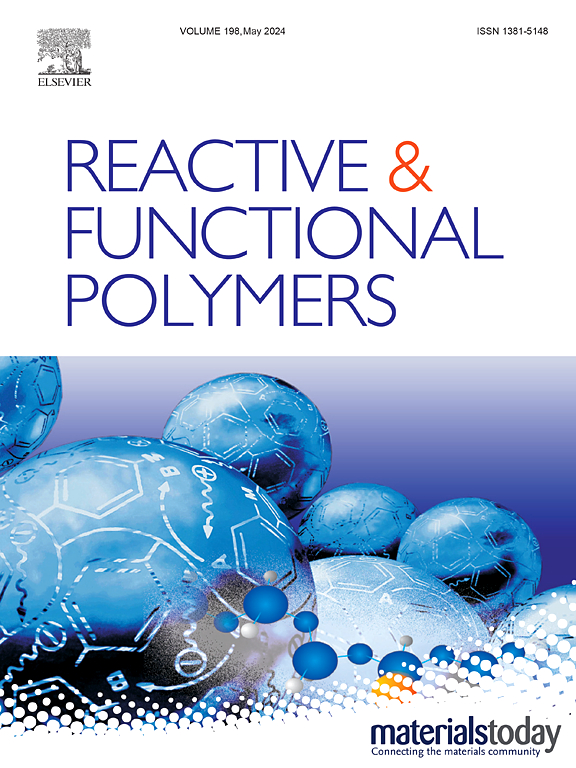Modification of polyamide nanofiltration membranes with green Dragon's blood natural resin: Improvement in permselectivity and antifouling properties
IF 5.1
3区 工程技术
Q1 CHEMISTRY, APPLIED
引用次数: 0
Abstract
In this study, dragon blood resin (DBR), which is a novel green and antibacterial bio-additive, was used to fabricate thin-film composite (TFC) nanofiltration (NF) membranes with improved antifouling and membrane performance properties. Pure water flux (PWF), different salt solution fluxes (Na2SO4 and NaCl), rejection, flux recovery rate (FRR), and long-term tests were carried out to assess the membrane performance and antifouling properties. Compared to bare TFC NF membranes, DBR-doped TFC NF membranes showed higher hydrophilicity, rougher surface layer, and higher negative charge. The 0.005 DBR NF membrane indicated the highest pure water, Na2SO4, and NaCl solution permeabilities of 67.9, 62.3 and 63.9 LMH, respectively. DBR-doped NF membranes showed the best desalination performance with NaCl, Na2SO4, and MgSO4 rejections of 51.3 %, 97.3 %, and 93.2 %, respectively. In addition, long-term studies have shown that DBR-doped NF membranes exhibit an 8 % flux decrease toward the HA/Na2SO4 solution fouling. The DBR TFC NF membrane displayed antibacterial activity against E.coli and S. aureus and showed antifouling characteristics, resulting in a notable reduction in fouling resistance parameters and a marked improvement in the antifouling performance of the bare TFC NF membrane. As a result, the findings showed that DBR was a superior and efficient novel bio-based additive for modifying the TFC NF membrane.

绿龙血天然树脂改性聚酰胺纳滤膜:提高透性和防污性能
以新型绿色抗菌生物添加剂龙血树脂(DBR)为原料,制备了具有较好防污性能和膜性能的薄膜复合纳滤(TFC)膜。通过纯水通量(PWF)、不同盐溶液通量(Na2SO4和NaCl)、截留率、通量回收率(FRR)和长期试验来评价膜的性能和防污性能。与裸TFC纳滤膜相比,掺dbr的TFC纳滤膜具有更高的亲水性、更粗糙的表面层和更高的负电荷。0.005 DBR滤膜的纯水、Na2SO4和NaCl溶液渗透率最高,分别为67.9、62.3和63.9 LMH。掺dbr的滤膜脱盐效果最好,NaCl、Na2SO4和MgSO4的去除率分别为51.3%、97.3%和93.2%。此外,长期研究表明,dbr掺杂的NF膜对HA/Na2SO4溶液的污染表现出8%的通量下降。DBR TFC纳滤膜对大肠杆菌和金黄色葡萄球菌具有抗菌活性,并具有防污特性,使裸TFC纳滤膜的抗污参数显著降低,防污性能显著提高。结果表明,DBR是一种高效的新型生物基改性TFC纳滤膜添加剂。
本文章由计算机程序翻译,如有差异,请以英文原文为准。
求助全文
约1分钟内获得全文
求助全文
来源期刊

Reactive & Functional Polymers
工程技术-高分子科学
CiteScore
8.90
自引率
5.90%
发文量
259
审稿时长
27 days
期刊介绍:
Reactive & Functional Polymers provides a forum to disseminate original ideas, concepts and developments in the science and technology of polymers with functional groups, which impart specific chemical reactivity or physical, chemical, structural, biological, and pharmacological functionality. The scope covers organic polymers, acting for instance as reagents, catalysts, templates, ion-exchangers, selective sorbents, chelating or antimicrobial agents, drug carriers, sensors, membranes, and hydrogels. This also includes reactive cross-linkable prepolymers and high-performance thermosetting polymers, natural or degradable polymers, conducting polymers, and porous polymers.
Original research articles must contain thorough molecular and material characterization data on synthesis of the above polymers in combination with their applications. Applications include but are not limited to catalysis, water or effluent treatment, separations and recovery, electronics and information storage, energy conversion, encapsulation, or adhesion.
 求助内容:
求助内容: 应助结果提醒方式:
应助结果提醒方式:


